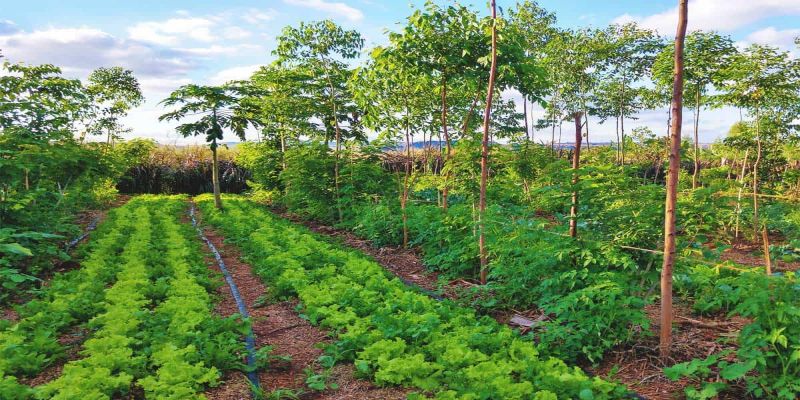The Unwritten Formulas of Regenerative Farming: Nature’s Blueprint for Abundance

Farming is not just about planting seeds and waiting for rain it’s a science, a rhythm, and a carefully measured balance of elements. In the world of regenerative agriculture, where nature is the ultimate teacher, farmers have long relied on precise formulas to ensure healthy crops, fertile soils, and resilient ecosystems.
Much like the well-known WALES formula in spraying—Water, Agitation, Liquid, Emulsifier, Surfactant—there exist other formulas just as crucial but often overlooked. These are the secret ratios, combinations, and cycles that determine success in farming.
Let’s dive into some of the most critical formulas that every regenerative farmer should know and apply.
1. The Carbon-to-Nitrogen (C:N) Ratio: The Science Behind Healthy Compost
The life of the soil depends on organic matter, but balance is key. If compost is too rich in nitrogen, it becomes a smelly, slimy mess. If it's too high in carbon, it takes forever to decompose.
The Formula: C:N = 30:1 (30 parts carbon to 1 part nitrogen)
High Carbon Materials: Dry leaves, straw, wood chips (browns)
High Nitrogen Materials: Fresh grass, manure, kitchen scraps (greens)
By maintaining this balance, farmers ensure that compost breaks down efficiently, releasing nutrients in a way that enriches the soil without burning plants.
2. The Moon Planting Cycle: Timing Seeding with Nature’s Calendar
Long before synthetic fertilizers, farmers relied on the lunar cycle to determine the best time for planting and harvesting. Science now confirms that the moon's gravitational pull affects soil moisture, much like it does ocean tides.
The Formula:
New Moon → First Quarter → Best for leafy vegetables (lettuce, spinach)
First Quarter → Full Moon → Best for fruiting plants (tomatoes, beans)
Full Moon → Last Quarter → Best for root crops (carrots, potatoes)
Last Quarter → New Moon → Best for pruning and soil rest
This ancient technique ensures stronger germination, faster growth, and increased yields proof that nature’s cycles are not random but designed for abundance.
3. The 1:10 Dilution Rule: Making Natural Fertilizers Safe and Effective
Whether using fermented plant juice, cow urine, or compost tea, dilution is critical to avoid burning crops while still delivering maximum nutrition.
The Formula: 1 part fertilizer to 10 parts water
This dilution prevents excess nitrogen from scorching leaves and ensures nutrients are delivered in an absorbable form. Some special cases, like foliar sprays, may require a 1:20 ratio for even gentler application.
4. The 4% Soil Organic Matter Rule: The Foundation of Fertility
Regenerative farmers know that soil teeming with life is the key to resilience. Science has shown that 4% organic matter in soil is the magic number for sustaining plant health, improving water retention, and reducing dependency on external inputs.
The Formula: 4% organic matter in soil for sustainable fertility
This can be achieved by:
Cover cropping (legumes, clover, alfalfa)
Minimal tillage (to keep microbial life undisturbed)
Applying compost & biochar
The result? Soil that breathes, holds water, and feeds plants naturally season after season.
5. The 5:2 Livestock Rotation Rule: Managing Grazing for Regeneration
Overgrazing damages soil and weakens plants. However, rotational grazing mimics the natural patterns of wild herds, which prevents overuse and promotes land recovery.
The Formula: 5 days of grazing, 2 months of recovery
By moving animals to fresh pasture every few days and letting the land rest, farmers prevent soil compaction, encourage deep-rooted grasses, and increase carbon sequestration. Healthy pastures mean better nutrition for livestock and richer soil for crops.
6. The 3-Layer Mulching System: Water Retention and Soil Protection
Mulching isn’t just about covering the soil it’s about creating a system that mimics nature’s forest floor, where moisture is locked in, weeds are suppressed, and soil life thrives.
The Formula: Three Layers of Mulch
1. Coarse Base Layer: Logs, large branches (creates air pockets and long-term moisture retention)
2. Middle Layer: Straw, dried leaves (acts as insulation and nutrient supply)
3. Top Layer: Fresh grass clippings or compost (feeds soil microbes and adds fertility)
This approach reduces evaporation, prevents erosion, and encourages worms and microbes to work their magic underground.
7. The 16 Essential Elements Rule: Feeding Crops Beyond NPK
Most fertilizers focus only on Nitrogen (N), Phosphorus (P), and Potassium (K), but crops require 16 essential nutrients to grow to their full potential.
The Formula: 16 Essential Nutrients
Macronutrients: N, P, K, Ca, Mg, S
Micronutrients: Fe, Mn, Zn, Cu, B, Mo, Cl, Ni, Co, Si
A deficiency in just one of these can cause stunted growth, poor fruiting, or disease susceptibility. Farmers using regenerative methods rely on compost, biochar, and seaweed extracts to ensure a full-spectrum nutrient profile.
Final Thoughts: The Hidden Mathematics of Nature
Farming is more than seeds and soil it’s a dance of elements, a precise application of nature’s own equations. Those who master these formulas don’t just grow food; they grow ecosystems, resilience, and prosperity.
Nature has already written the rulebook. It’s up to us to read between the lines.
By Dr. Brix
Agro-Ecology & Agribusiness Expert | Value Chain Specialist | Regenerative Agriculture Advocate with over a decade of experience transforming agricultural systems across Southern Africa, I specialize in sustainable farming, agribusiness value chains, and regenerative agriculture. Let’s grow a resilient future together.
(tziwa94@gmail.com)
